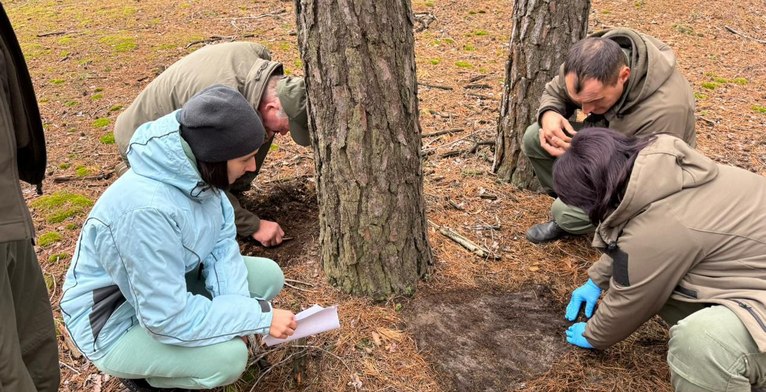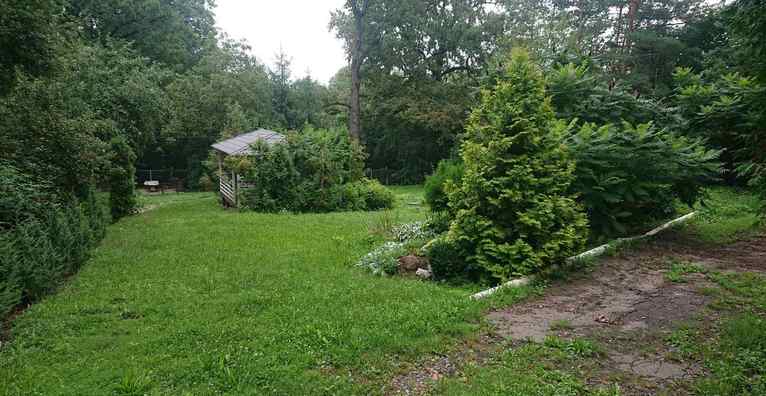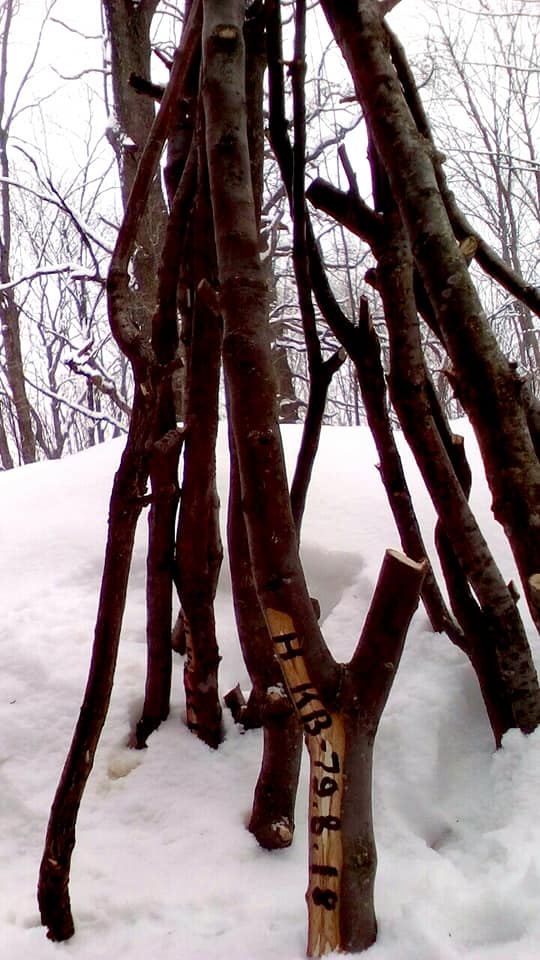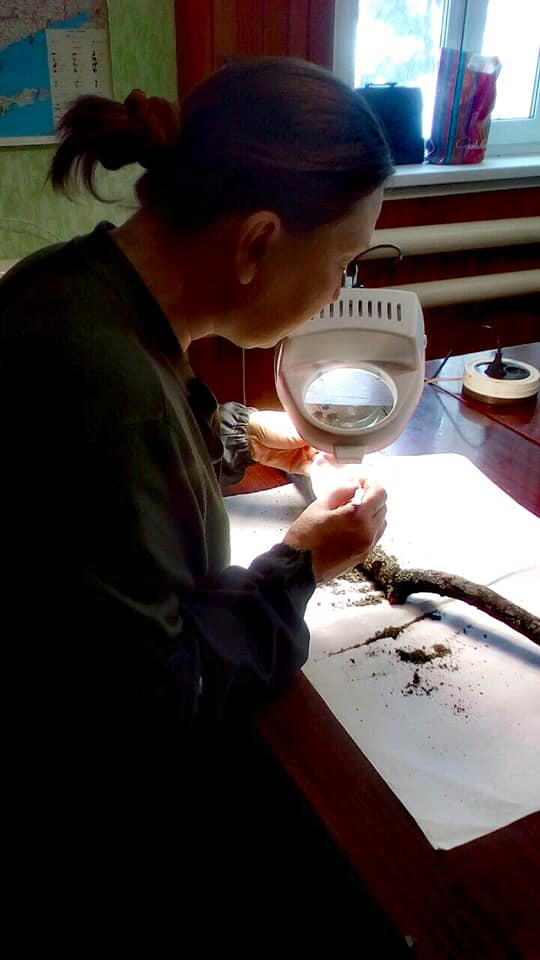Almost a decade has passed since the last significant leaf damage was recorded in the plantations of the Babai Forestry, part of the Zhovtneve Forest Enterprise of the Kharkiv Regional Forestry and Hunting Management. However, forestry officials responsible for forest protection, including the head of the forest protection department, V.V. Zubko, and leading engineer L.V. Shapovalova, annually send branches from model pedunculate oaks of an early form for laboratory analysis. This is done to determine the species composition of early spring leaf-eating pests and assess the risk of forest damage.
Where Do Leaf-Eating Pests Winter?
Forest pathologist Tetyana Korovka conducts a thorough analysis of the branches to detect overwintering pest eggs. According to the latest examination, a small number of green oak tortrix (GOT) eggs were found. To protect overwintering reserves from adverse factors, GOT females lay eggs in bark cracks, under lichens, and in other shelters. These eggs are tiny (up to 1 mm) and hard to spot with the naked eye. However, with the right lighting and magnification, this developmental stage does not go unnoticed by forest pathologists.
The current level of GOT overwintering egg reserves does not pose a threat of leaf damage in spring 2019. The forestry service should create artificial nesting sites and conditions to attract insectivorous birds.









